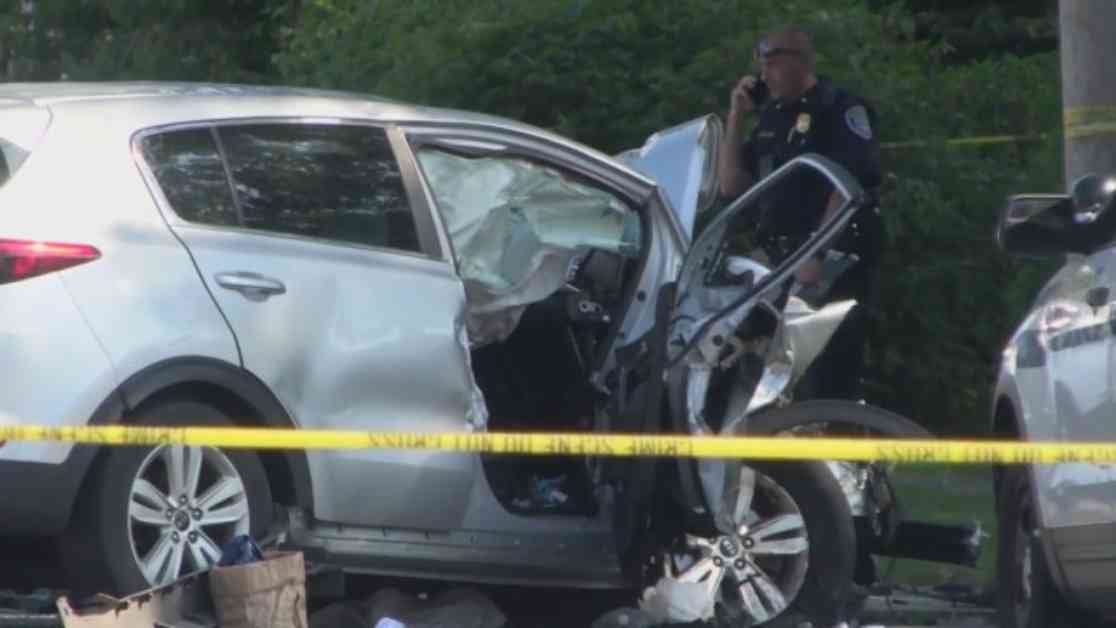BUFFALO, N.Y. (WIVB) — A tragic incident in Brighton, New York, has sparked a heated discussion about bail reform following the deadly crash caused by a teenage driver in a stolen car. According to Rochester police, the 17-year-old driver had been arrested 12 times last year and was on parole when he was arrested for stealing a car in Erie County just weeks before the fatal crash.
Legal experts and law enforcement officials are now questioning how the teen was able to remain in the community despite his extensive criminal history and repeated offenses. Former Erie County District Attorney John Flynn expressed his concerns, stating, “At a certain point, people have to be held accountable, including 17-year-olds.”
The teenage driver, whose identity has not been disclosed, was involved in a crash in Brighton that resulted in the death of a 92-year-old individual. Prior to the fatal incident, the teen had been arrested multiple times for “smash-and-grab” incidents, where stolen cars were used for breaking into businesses. Additionally, the 17-year-old was on parole for burglary at the time of the crash.
Rochester Police Chief David Smith weighed in on the situation, acknowledging the complexities of the judicial system and the challenges faced by judges in making decisions about bail. He emphasized the need for a case-by-case assessment of each situation, pointing out that the failure to prevent the teen from committing further crimes was a collective responsibility.
Criminal defense lawyer Barry Covert raised concerns about the lack of action taken by the New York State Parole Department in response to the teen’s parole violation. He explained that immediate steps could have been taken to address the violation, such as seeking a petition and a warrant through the court with jurisdiction over the teen’s sentencing.
Flynn highlighted the issue of the teen being part of the Raise the Age system, which aims to provide second chances to individuals without resorting to incarceration. He noted that the teen had been adjudicated as an adult and had previously served time in detention, making his parole status unusual under the Raise the Age framework.
Both Covert and Flynn emphasized the need for potential changes to the juvenile justice process in light of this tragic incident. Flynn called for a reevaluation of Raise the Age and bail reform laws, stressing the importance of holding individuals accountable for their actions. Covert echoed these sentiments, stating that repeated criminal behavior cannot be tolerated, especially when individuals are out on bail or their own recognizance.
As the investigation into the crash continues, questions remain about why the teen was not detained after violating his parole. Covert suggested that a thorough examination of the circumstances surrounding the parole violation is necessary to prevent similar incidents in the future.
Overall, the tragic crash in Brighton has reignited the debate on bail reform and juvenile justice, prompting calls for a closer examination of the existing laws and policies. The need for accountability and public safety has been underscored by this devastating event, highlighting the importance of addressing systemic issues in the criminal justice system.
Challenges in Bail Reform
One of the key issues highlighted by the Brighton crash is the challenge of implementing effective bail reform measures. The case of the 17-year-old driver raises questions about the effectiveness of current bail policies in addressing repeat offenders and ensuring public safety.
The teen’s extensive criminal history and parole status point to a systemic failure in monitoring and addressing individuals with a high risk of reoffending. Despite being arrested multiple times and violating his parole, the teen was able to continue his criminal activities, ultimately leading to a tragic loss of life.
Reevaluating Juvenile Justice
The Brighton crash has also sparked discussions about the effectiveness of the Raise the Age system and its impact on juvenile offenders. The fact that the teen was adjudicated as an adult and had a history of incarceration raises questions about the efficacy of rehabilitation and second chances for young offenders.
Flynn and Covert’s calls for a reevaluation of Raise the Age and other juvenile justice policies reflect a growing concern about the need for accountability and intervention in cases involving repeat offenders. The tragic consequences of the Brighton crash serve as a stark reminder of the challenges faced in addressing juvenile crime and ensuring justice for victims.
Addressing Systemic Issues
The Brighton crash underscores the need for a comprehensive review of the criminal justice system to address systemic issues that contribute to repeat offenses and failures in monitoring high-risk individuals. The case of the 17-year-old driver highlights the gaps in the current system and the need for proactive measures to prevent similar incidents in the future.
By examining the circumstances surrounding the teen’s parole violation and subsequent criminal activities, law enforcement officials and legal experts can identify areas for improvement and develop strategies to enhance public safety. The tragic loss of life in Brighton serves as a sobering reminder of the consequences of inaction and the urgent need for reform in the criminal justice system.
In conclusion, the Brighton crash has sparked a critical discussion about bail reform, juvenile justice, and systemic issues in the criminal justice system. The tragic loss of life and the circumstances surrounding the incident underscore the need for accountability, intervention, and reform to prevent similar tragedies in the future. As the investigation continues, it is imperative that stakeholders work together to address the root causes of repeat offenses and ensure public safety for all members of the community.


